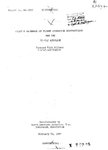- Thread starter
- #81
The R-2800 is a bit too big and heavy to serve as a substitute Merlin.
Thanks for bringing us back to the topic
Wouldn't it depend upon the airframe that is about to receive the replacement? I can see the Spitfire as being too light for the R-2800, but not the P-51. We can take a look at the soviet examples - they re-engined the Lagg-3 and Yak-3 with the Ash-82, creating the La-5 and Yak-3U.
The US kept 1/3 (at most) of Packard production, some sources say as little as 20%. If Packard doesn't make Merlins that means no Merlin powered P-40s ( not much of a loss) and No Merlin Mustangs ( a much bigger loss)
Within a scope of this thread: how feasible is the P-51 with 2-stage V-1710/R-2800, for, say, Big Week to be operating in meaningful numbers (the Packard being second source for the V-1710 or R-2800)?
but it also means 36,000-44,000 fewer Merlins for British and Canadian production aircraft. and that is the big loss in this scenario. For existing US engines the R-1820 and R-1830 are too small. The R-3350 is too big and too late. The R-2800 is too big for many applications, It rather leaves the the R-2600 (Hercules replacement in some aircraft and since the Hercules and Merlin both worked on a number of aircraft it might be a small change) and the Allison V-1710, as "plug in" replacements for existing aircraft, at least in a physical size sense.
A Halifax or Lancaster with four R-2800s might be a wondrous airplane but either one with four R-2600s might require a whole lot less redesign. Hurri-bombers with V-1710s might work.
How feasible would be the turbo V-1710s for the British bombers; installation a-la the XB-38? The single-stage V-1710s for the Mossie FBs (plus the Coastal command planes). Beaufighter with V-1710 or single stage R-2800? The Hurricannes loosing the two-speed Merlins, while receiving V-1710s (Merlins go to the heavies)?
In 1940-41 the British NEED another source of engines to power the airframes they are already planning to make in 1942-43. They don't need a source of engines that won't be making large quantities of engines until 1943/44 and need new airframes to make use of the larger engines. They already have 4 engines larger than the Merlin in the pipeline themselves.
Of course they need the yet another source, and Packard was providing them with meaningful number of engines from 1942 on. Not producing the Merlin, it can produce V-1710 in same quantities (or bigger?). With one of their tasks now made easier, Allison can introduce the 2-stage variant easier/earlier?
This should not be read as the 'Allison was every inch as good as Merlin' mantra, but something that should inspire the further discussion about the choices for the W. Allies that do not have US-built Merlins in the ww2.

